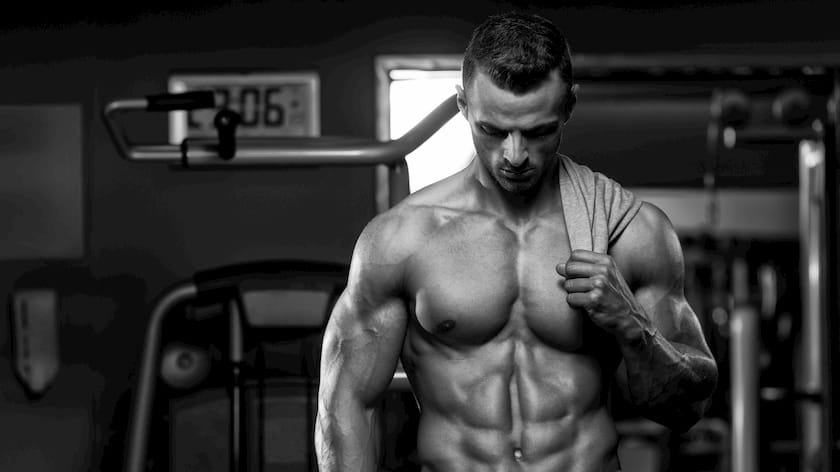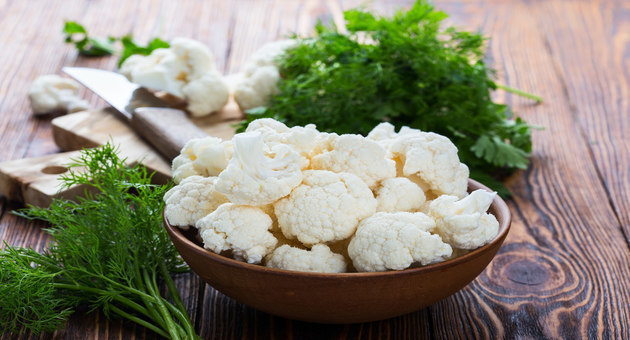Looking to pack on more lean muscle mass? Whether you’re a beginner trainee or an experienced lifter, there are some important concepts you should know that will apply to everyone.
While the actual workout plan a beginner utilizes will generally be different from that of a seasoned lifter, the concepts of building muscle naturally won’t change.
THE GOAL OF THIS NATURAL BODYBUILDING GUIDE
This guide will ensure that you know precisely what it takes to pack on pounds of lean muscle and put a game plan into action.
PRIMARY FACTORS FOR BUILDING NATURAL MUSCLE
To build natural muscle successfully, you need to take into account three primary factors:
- Training
- Nutrition
- Supplementation
Miss any one of these elements, and you’ll be seeing less than maximal results. Let’s walk through each of these factors so you can fully understand the requirements for each.
NATURAL BODYBUILDING TRAINING
When looking at your muscle anatomy, you will find three types of muscles: type 1, type 2a, and type 2b. Type 1 muscles are the endurance based muscle fibers that are resistant to growth, produce a low power output, and tend to resist fatigue.
These are not the primary muscles we are concerned with on a natural bodybuilding program. Instead, we are looking more closely at the type 2a and type 2b muscle fibers, which have a higher potential for growth and power output. This is precisely what you are trying to accomplish. These muscle fibers fatigue far faster however, which is why weightlifting sets don’t last for minutes at a time.
With ongoing weight training, you will not only experience a shift in fiber type often, but you can also train so that you build more of a particular type of muscle fiber. So with ongoing bodybuilding training, you can possess more total type 2 muscle fibers, giving you that strong and large look you’re going for.

As you train your muscles, you will also notice two main forms of hypertrophy (an increase in the size of your muscles).
Sarcoplasmic hypertrophy is a temporary size increase due to a higher amount of sarcoplasm in the muscle tissue. This occurs when you get a large buildup of byproducts after a weight lifting workout and have an increased flow of blood into that particular muscle tissue. Basically, it’s your ‘muscle pump.’ You see this size gain quickly upon exercise, but it also tends to leave just about as quickly as it came. This type of growth is mostly noted after lighter weight sets taken into the 10-15 range.
Myofibrillar hypertrophy, on the other hand, is an actual increase in the size of the muscle contractile fibers. This is more permanent and will indicate real muscle size gains. It’s slower to come about, but when it does, it’s more likely to stand the test of time. This type of growth is noted more after heavy weight sets of between 4-10 reps.
Given all of this information, we can now use it to help develop a proper natural bodybuilding program.
WHAT CAUSES MUSCLE GROWTH
To get the muscle growth you want, you’ll need to subject it to a stress load that it has not handled before. This is referred to as progressive tension overload. There are multiple ways you can accomplish this. Some include:
- Performing more reps in any given set
- Adding more weight to the bar
- Decreasing the rest time between working sets
All of these will create muscle damage in the cells, which your body will then repair and grow back stronger and larger if proper nutrition is in place (more on that shortly).
When it comes to building lean, dense muscle, adding more weight to the bar tends to be the best route to take as this will most favor myofibrillar hypertrophy as mentioned above.
This isn’t to say there isn’t a place for the higher rep (sarcoplasmic hypertrophy) sets, but they should not be the main focus of a natural bodybuilding program.
CHOOSING SMART EXERCISES TO BUILD MORE MUSCLE
Another important element in the natural muscle building equation is selecting the right exercises to perform. The two primary choices of exercise include compound and isolation exercises.
Compound exercises are those that work on multiple muscle groups at once, spanning across one or more joints. Squats, bench press, rows, shoulder press, and pull-ups are great examples of these. Because you will have more muscle fibers working with each rep you perform, you have more total power behind you.
What does this mean? More weight lifted. As noted in the above section, this is key to myofibrillar growth. Therefore, compound exercises should make the bulk of your workout program.
Isolation exercises, on the other hand, are those that will ‘isolate’ a single muscle group. As you will be working just one muscle total here, this means less weight lifted. These are perfect then for inducing sarcoplasmic hypertrophy.
So in a good bodybuilding program, you want to the majority of your workout targeted towards compound lifts in the lower rep range that use heavy weights. This will result in a permanent growth of the muscle fibers while also helping you see great strength gains.
In addition to that, a smaller component of your program should be directed towards isolation exercises, using lighter weights and taken into the higher rep range. This will help to shuttle blood into the muscle tissue, resulting in a strong pump and great sarcoplasmic hypotrophy.
In addition to this, these exercises can also help to strengthen individual muscle groups, which may currently be weaker. Strengthening them can then mean you are stronger on your main core lifts, which provides even further myofibrillar growth benefits.
Remember to add sufficient rest time between each set to allow for a near full recovery. This typically means around 120 seconds for compound exercises and 30-60 seconds for isolation moves.
Here is what a sample program may look like:
NATURAL BODYBUILDING SAMPLE WORKOUT ROUTINE
UPPER BODY WORKOUT
- Bench Press: 4 sets of 5 reps
- Rows: 4 sets of 5 reps
- Shoulder Press: 3 sets of 5 reps
- Pull-Ups/Downs: 3 sets of 6-8 reps
- Bicep Curls: 2 sets of 10 reps
- Tricep Extensions: 2 sets of 10 reps
- Lateral Raises: 2 sets of 12 reps
LOWER BODY WORKOUT
- Squats: 5 sets of 3-5 reps
- Leg Press: 3 sets of 6 reps
- Lunges: 2 sets of 8 reps
- Leg Extension: 2 sets of 12 reps
- Hamstring Curl: 2 sets of 12 reps
- Calf Raises: 3 sets of 15 reps
- Hanging Leg Raises: 2 sets of 15 reps
Remember that you should always try and do more with each workout you do. This indicates progress. As often as possible, add more weight to the bar. However, if you can’t do that (as you will not increase weight every session), add another rep, do another set, or change your exercises around slightly. Just do something to challenge your body in a new manner each and every workout so that you give the body a reason to adapt and grow stronger and larger.
Now that we’ve covered the workout side of things let’s talk about nutrition.
NATURAL BODYBUILDING DIET: EATING FOR SIZE

When it comes to building muscle, exercise is really only half the game. In fact, diet can easily make or break your progress.
Think of it this way: if you were to build an addition to your house and you hired a crew of 10 men and gave them all the hammers and nails they needed (but no wood), how far would they get?
Not far at all. They might swing those hammers around all day long, but the new addition to your house would never be built.
In order to build it, they need raw materials. Food is the raw materials for your body. Without it, you will never build more muscle than you have right now.
To see muscle mass gain, you need four things:
- A Calorie Surplus: You must be taking in more calories than you burn off over the course of the day.
- Sufficient Lean Protein: Protein will provide the building blocks that muscle tissue is made of.
- Sufficient Carbohydrates: Carbohydrates provide the energy the body uses to assemble those building blocks (protein) into muscle tissue.
- Sufficient Dietary Fats: These also provide energy, but more importantly, help normalize key hormones (such as testosterone) that are essential for directing the muscle building process.
HOW MANY OF THESE DO YOU NEED?
Take your calorie surplus to about 250-500 calories over and beyond your daily maintenance requirements. This will generally have you gaining about 0.5-1 pound per week. Note that eating more than this doesn’t mean more muscle. It’ll just mean a higher chance of excess fat gain.
To build muscle effectively, 0.8-1.2 grams of protein/lb of body weight should be consumed. Consuming 0.2-0.25 grams/lb immediately post workout can also give additional benefit in helping promote faster recovery, strength gains, and muscle size gains.
And finally, carbohydrates and fats can fluctuate based on your own personal preferences. However, most people will find they feel best on 100 grams of carbs or higher per day and no fewer than 0.35 grams of fat/lb per day. On most natural bodybuilding programs, your intake of both of these nutrients will be higher than these numbers.
Once you have your numbers down, you then need to consider your food choices. Some people adopt an ‘If It Fits Your Macro’s Approach’, meaning they eat anything they desire as long as they hit their numbers for the day.
Others adopt a ‘clean eating’ style, meaning they only eat foods that are natural and unprocessed.
Both of these methods can deliver results but keep in mind eating clean, healthy foods will increase the probability that you build lean muscle mass, stay healthy, stay nourished, and feel energized throughout the day. For most athletes, it’s simply the superior route to go.
This doesn’t mean you can’t indulge occasionally, but keep it to a minimum amount for best results.
In terms of meal frequency, feel free to divide your meals up as you choose, eating anywhere from 3-6+ meals per day. Just do be sure that you eat a good breakfast and get some protein and carbohydrates into your body as shortly after the workout as possible. These are the two periods when eating is a must for optimal results. In addition to that, eating within the 2 hours prior to exercise will also help ensure that you have the energy available to complete that exercise session.
Beyond that, it’s more important to time your meals and frequency in a manner that works with your lifestyle.
NATURAL BODYBUILDING SUPPLEMENTS

Finally, the last thing to take into account is supplementation. With literally thousands of products out there, it’s easy to be misled. You need to put on your detective glasses and choose carefully.
First, make sure any product you consider is free of banned substances. Do your research. The last thing you want to be putting into your body is something that is potentially dangerous or banned (if you plan on competing in a drug-tested organization).
Also, check to see if there are any clinical studies done on the ingredients in the product you are considering. Good products will contain ingredients with research conducted on them, illustrating the results that they produce.
Try and find a product that contains no artificial sweeteners, additives, or dyes. Putting these substances into your system may leave you with unwanted side effects down the road, and they do absolutely nothing to benefit the user.
It’s also important that any supplement you consider list the full ingredient line-up along with the doses it contains. If you notice that the label reads as a ‘proprietary blend’ (meaning the company is not sharing with you precisely what is in the product), step away from that product immediately. You have no idea what you are putting into your body.
Invest in a fully transparent supplement company. They should show you the evidence that their products work, as well as exactly what ingredients the products contain. Olympia App is a great place to start and meet all of these requirements.
TOP 15 SECRETS TO SUCCESS IN NATURAL BODYBUILDING
When it comes to natural bodybuilding, training is the part that everyone looks forward to. Understanding how to train a specific muscle group properly with the correct intensity, volume, and other acute variables look easy in comparison to perfecting your meal planner or supplementation guide. This comprehensive list covers the top 15 secrets to success when your goal is to build natural muscle. Use it as a quick reference to keep yourself on track!
1. EAT PLENTY OF PROTEIN
2. DON’T NEGLECT CARBS
3. HEALTHY FATS
The king of the healthy fats, omega-3 fatty acids, can be found in fish such as salmon, oils such as flaxseed oil, and seeds such as pumpkin seeds. Here are more examples of fats that you want to include in your diet:
- Avocados
- Olives
- Cashews
- Almonds
- Flax seeds
- Chia seeds
- Olive oil
- Canola oil
4. DON’T FORGET ABOUT YOUR VEGETABLES
5. DRINK PLENTY OF WATER

6. MAKE QUALITY PROTEIN SUPPLEMENTS YOUR FRIEND
7. CREATINE FOR STRENGTH, SIZE, AND RECOVERY
8. DON’T FORGET CREATINE’S BUDDY, GLUTAMINE
9. FILL IN THE GAPS WITH A MULTI-VITAMIN
10. MIX YOUR ANTIOXIDANTS
11. BETAINE ANHYDROUS, BETA-ALANINE, AND CITRULLINE MALATE
12. EAT ENOUGH FOOD
13. NEVER MISS A MEAL
14. CYCLE BETWEEN HIGH AND LOW CARB DAYS
15. PLAN AHEAD
CONCLUSION
The road to developing a bodybuilding physique, whether for the stage or for your own personal accomplishment, is far from easy. Knowing your way around the weight room is important but don’t forget that nutrition is going to make up 70% of the results you see!
You need to be as comfortable, if not more so, picking up a skillet in the kitchen as you are picking up a dumbbell in the gym. Attaining the physique you want is going to take the right exercise routine, nutritional meal planner, and supplementation program. Stay dedicated and the glory will be yours.


